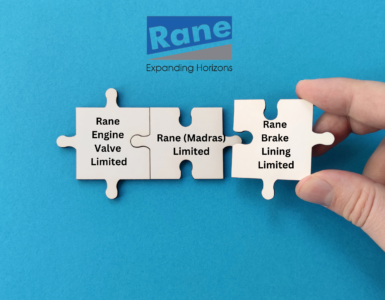CIE Automotive S.A. is a very large automotive conglomerate having its registered office in Spain and listed on Bilbao and Madrid stock exchange. Its group company Participaciones Internacionales Autometal Tres. S.L. (PIA 3) which is also incorporated in Spain is a holding company for acquiring three operating forging companies in Europe from CIE which in turn held either directly or through its subsidiaries. On the other hand, Mahindra & Mahindra (M&M) is a large conglomerate of various businesses from automobile to real estate development. It holds directly into Mahindra Hinoday Industries Limited (MHIL) engaged in the business of manufacturing under castings and incorporated in India, Mahindra Ugine Steel Company Limited (MUSCO) engaged in the business of manufacturing under stampings and incorporated in India & listed on both BSE and NSE, Mahindra Gears International Limited (referred to as MGIL) and incorporated in Mauritius, Mahindra Investments (India) Private Limited (referred to as MIIPL) an investment holding company for the groups gear business in India incorporated in India and Mahindra Forging Limited (MFL) engaged in manufacturing under forgings incorporated in India and listed on the BSE and NSE.
An integrated scheme of amalgamation was executed to merge MHIL, MUSCO, MGIL MIIPL and PIA 3 into MFL in India. But before executing the aforesaid scheme the following actions have been undertaken by the respective groups (namely CIE and M&M) –
| Action By CIE | Action by M& M |
| Acquisition of specified stake in MHIL from M&M or group companies of M&M | Sale of specified stake in MHIL to CIE or group company of CIE |
| Acquisition of specified stake in MFL from M&M or group companies of M&M | Sale of specified stake in MFL to CIE or group company of CIE |
| PIA 3 to acquire operating forging companies either directly from CIE or indirectly through its subsidiaries | Acquire by transfer unrelated or other business from MUSCO including surplus real estate |
| Introducing PIA 3 for purpose of aforesaid amalgamation | M&M to transfer its holding in Mahindra Gears & Transmission Private Limited (referred to as MGTPL) to MIIPL in consideration for shares in MIIPL |
| Redemption of preference capital of MGIL ( a direct subsidiary of M&M) into equity for the equivalent amount | |
| Conversion of preference capital of Mahindra Gears Global Limited (referred to as MGGL) (a subsidiary of MGIL and step down subsidiary of M&M) into equity |
In view of the above actions by both groups (namely CIE and M&M), the following questions need to be understood in respect of the background for executing such scheme of amalgamation –
- What is the business essence of undertaking such scheme of amalgamation?
Based on the information available (Source: SWAP Ratio Report, Integrated Scheme of Amalgamation and website where necessary) the transacting entities both operating and holding entities through their operating subsidiaries are engaged in the business of manufacturing predominantly of automotive components through forging, casting and stamping processes. These manufactured components pertain to –
| Transacting Entity | Auto Component |
| Castings | |
| MHIL |
|
| Stampings | |
| MUSCO |
|
| Forgings | |
| PIA 3 |
|
| MFL |
|
| Products | |
| MGIL (through its operating companies) |
|
| MIIPL through its operating companies i.e. MGTPL) |
|
Manufacturing different components or parts of components firstly enable diversify product portfolio that in turns enable better customer acquisition. Secondly combining under single roof enables synergies by way of cross selling, procurement costs, operating efficiencies by way of capacity utilization, optimization of fixed costs namely administrative and selling and distribution overheads, enhance mobilization of capital (e.g. utilizing assets of the business that does not require debt funding), etc. This could have been done or is being by M&M group itself to derive synergies and thereby pass on such benefits to their prime customer i.e. Mahindra & Mahindra Limited (referred to as MML) but it seems that group may now want to derive synergies internationally and hence sourced an equivalent foreign player i.e. CIE group. It seems that given the competitiveness in automobile manufacturing players it may be wise to carve out auto component manufacturing activity separately and make it independent so as to enable it to cater to automobile manufacturing competitors as well through collaborations, ventures or divestment to foreign auto component players catering to such competitors or other automobile manufacturers.
- Why did CIE acquire stake specifically in MHIL and MFL and not any other transacting entity of the M&M group?
The following reasons may have been considered for acquiring stake in the specified entities –- Considering the product range of MHIL and MFL vis-à-vis PIA 3(Refer point 1 above) which are primarily focused on the same body part of an automobile though some may be different components but of the same body part. So from CIE business perspective it is wise to have invested in MHIL and MFL considering that in the case of unfortunate events where the said scheme of amalgamation cannot be implemented they are left with business which is not alien to them rather than gears & transmissions or fuel tanks or panel assemblies or doors in India.
- Considering that post-amalgamation the shareholding of CIE through its group company is 52.73% it seems that the understanding of the business venture is to transfer control to the foreign partner and amongst the available transacting entities MHIL and MFL could enable achieve the same. Further, the amount paid to acquire the shares of the aforesaid entities seems to be ploughed back to MUSCO for funding the acquisition of nonrelated and surplus assets for M&M group and post-amalgamation these funds transferred to MFL which in turn is beneficially controlled by CIE.
- What is/are the objective/s inferred to be achieved through the scheme of arrangement?
The following objectives may be inferred upon to achieved by virtue of the said scheme of arrangement –
- CIE group and M&M group to enter into a business venture jointly
- CIE group to eventually control the venture
- As far as possible the arrangement to provide minimum additional investment by either group Brief Evaluation of the Applicable Regulatory (In respect to the transaction under review):
| Regulatory | Comments |
| FDI Policy | Since 100% and automatic allowable only compliance procedure required to be undertaken. Since the Policy is liberal towards such sector, there is no requirement for considering the same for transaction structuring. |
| Competition Act | The scheme shall be effective only when the acquisition and amalgamation are approved by the CCI. So doesn’t really matter in case if shares are issued or acquired or assets are acquired, if the conditions specified are satisfied then the transacting parties require adhering to the said Act and Regulations. Irrespective of whether the acquisition is of shares or assets of listed or unlisted entities the same subject to satisfaction of conditions specified therein becomes applicable. |
| SEBI Takeover | Given the structure pursued, the said code is applicable is respect of the acquisition of shares by CIE Group in MFL. From structuring point of view it is a mandatory compliance but alternatively inapplicability of the same would mean where all transacting entities are unlisted |
| Companies Act | It facilitates the implementation and consummation of the said scheme of amalgamation/ merger. Given the transaction structure, it does not significantly contribute towards any alternative structure. |
| Income Tax | Amalgamation/merger i.e. transaction structure is aimed to be tax neutral. Hence significant from transaction cost point of view. |
| Exchange Control | Given the transaction it will have to be applied in pursuance of the regulation as specified under FEMA. Inapplicability would mean tin, a situation where all entities are WOS of Transferee |
| Transaction Accounting | Simply put since the scheme specifies pooling of interest method it means that post-amalgamation/merger MFL is expected to derive amalgamation adjustment reserve (credit) which shall be transferred to general reserve in view of the said accounting standard. This means additional free reserves for MFL for the purpose of distribution of dividend in the future. |
Conclusion:
Considering the commercial objectives the said structure enables the foreign group to participate in business in India and at the same time enable Indian group to participate in the business outside India. Structuring a transaction that enables to achieve the commercial objective must be undertaken in optimum cost and time which is significant from the business point of view but at the same time does not destroy value for all stakeholders in the long run. The management of CIE and M&M group for surely evaluated multiple structures that enable to achieve the same objective considering applicable regulations but must have shortlisted the said structure after immense deliberation and examination considering interest of all stakeholders and business.




